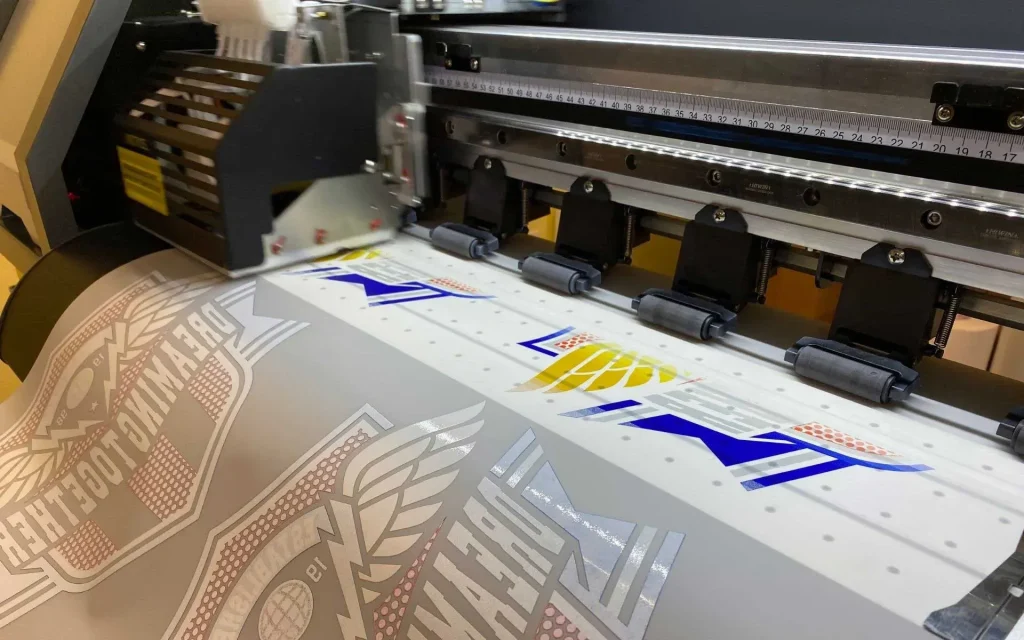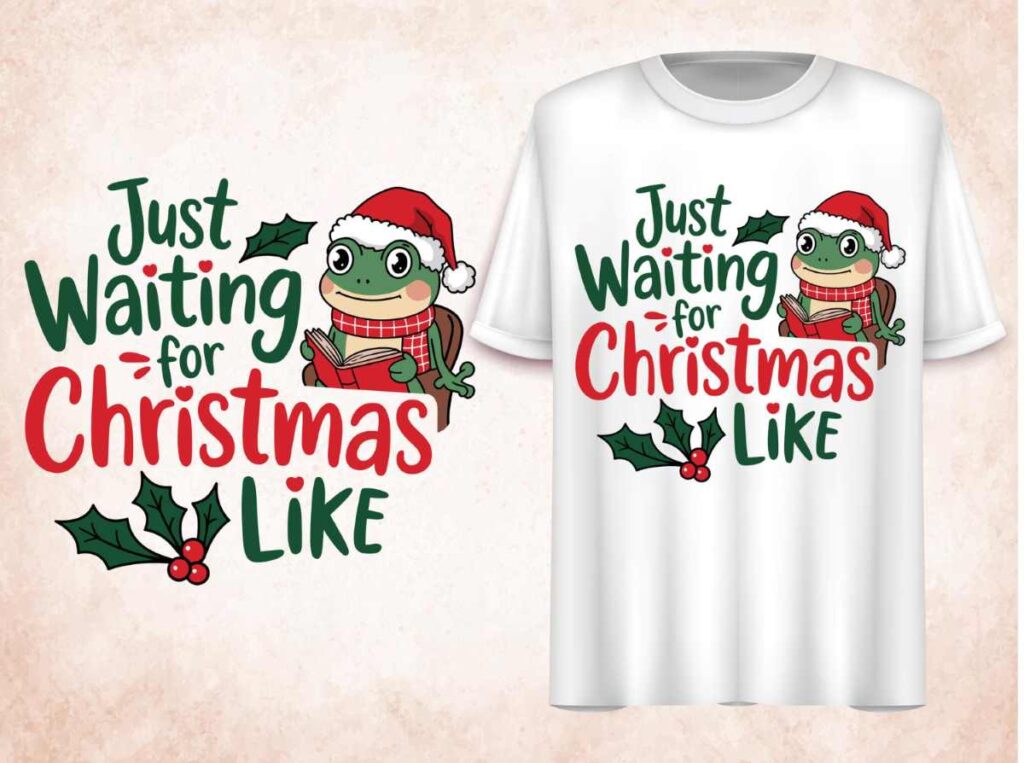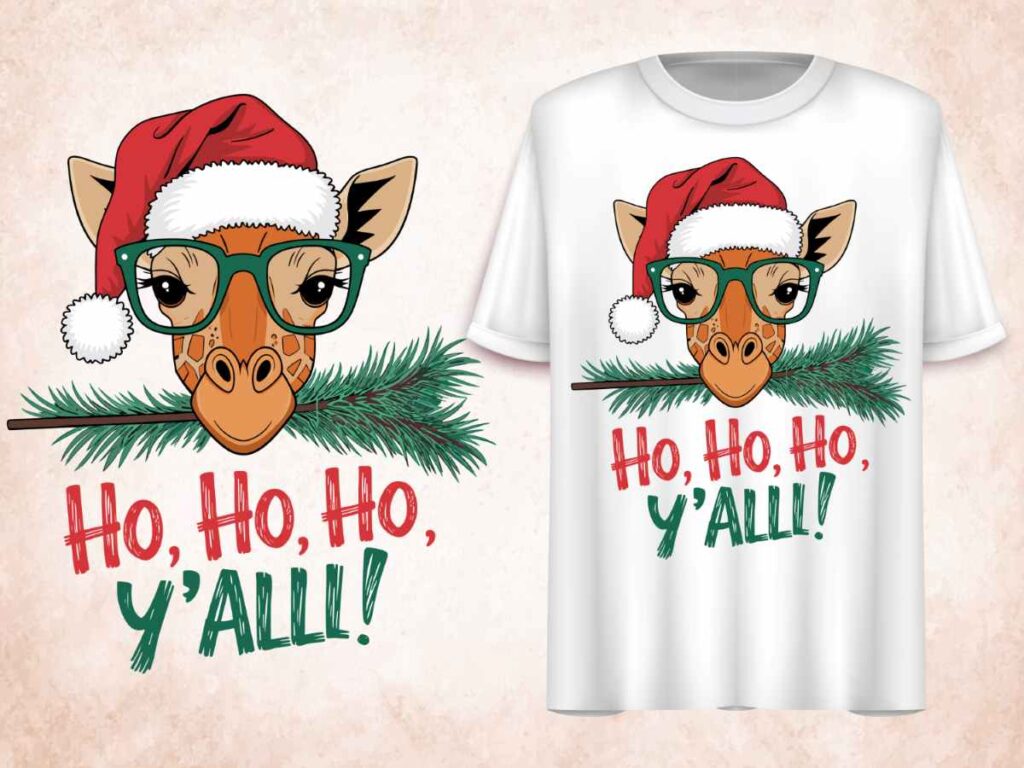DTF printing, short for Direct-to-Film printing, is a revolutionary technique reshaping the landscape of fabric printing today. By allowing vibrant, high-quality designs to be transferred directly onto a variety of materials, this method has become increasingly favored for custom apparel and promotional products. Unlike traditional screen printing or Direct-to-Garment (DTG) approaches, DTF printing combines flexibility with exceptional output quality, making it accessible for both budding entrepreneurs and seasoned professionals. The process begins with printing designs onto a PET film, enabling a seamless transfer to fabrics when heat is applied. With its array of benefits—from superior color vibrancy to cost-effective options for small batches—DTF printing is quickly becoming a go-to solution in the textile industry.
Direct-to-Film printing, often recognized as DTF transfer, is emerging as a leading choice in modern fabric printing solutions. This innovative technique excels in delivering stunning graphical prints on a variety of substrates, catering to the growing demand for customized apparel and promotional items. Compared to conventional methods, such as Direct-to-Garment (DTG) and screen printing, this approach not only ensures top-notch quality but also enhances production efficiency. By utilizing PET film, DTF allows for intricate designs to be easily and effectively applied, making it a versatile option for diverse applications. As the world of printing continues to evolve, the benefits of DTF printing are paving the way for sustainable practices and increased accessibility within the industry.
Understanding DTF Printing Technology
DTF printing, or Direct-to-Film printing, is a revolutionary method in the fabric printing sector, showcasing remarkable versatility and quality. This technology utilizes a special PET film onto which vibrant graphics are digitally printed, making it suitable for a variety of materials. The primary appeal lies in the ability to produce highly detailed and colorful prints that stand out on fabrics ranging from cotton to polyester blends. Furthermore, the process involves a simple heat transfer application, allowing for unique designs to be easily printed and adhered to clothing, accessories, and promotional items.
The mechanics of DTF printing involve several critical steps, ensuring that users achieve professional results every time. Initially, specific inks designed for film printing are used, delivering crisp and vivid images. Subsequently, an adhesive powder is applied to the wet ink, creating a strong bond between the film and the fabric upon heat application. This innovative process not only simplifies printing for large runs but also makes it accessible for custom apparel, ensuring that even small businesses can offer personalized products without significant upfront investments.
The Advantages of DTF Printing in Custom Apparel
DTF printing has become increasingly popular for custom apparel due to its numerous advantages over traditional printing methods. One of its standout features is the ability to produce highly detailed and vibrant designs, which is essential for brands looking to make a striking impression. Unlike methods like screen printing, which can lose detail and color vibrancy, DTF ensures that intricate designs remain sharp and eye-catching, making it the ideal choice for fashion-forward companies and custom merchandise.
Another significant benefit of DTF printing is its adaptability to various fabric types. Whether you are working with cotton, polyester, or a fabric blend, DTF transfers effortlessly adhere to all, expanding the possibilities for design applications. Additionally, it caters to small batch productions efficiently, which is a major cost-saving factor for startups and small businesses. With lower initial investment costs and less equipment required than Direct-to-Garment (DTG) methods, DTF printing makes entering the custom apparel market easier than ever.
Exploring the Process of DTF Transfer Printing
The DTF transfer printing process involves a few key steps that ensure quality and efficiency. First, the design is printed onto a PET film with specially formulated inks. It is crucial to select the appropriate printer that supports DTF capabilities to achieve the best results. Once the design is printed, a powdered adhesive is applied to the wet ink while it is still on the film, which will ensure lasting adhesion during the transfer process.
After the adhesive is applied and cured, the process shifts to transferring the design onto the desired fabric using a heat press. The heat causes the adhesive to activate, bonding the printed design firmly onto the fabric. This simple yet effective method not only allows for scalability of production but also ensures that high-quality and reliable results are consistently achieved. The ease of this process gives businesses the advantage of quickly fulfilling orders, thus enhancing customer satisfaction.
Challenges and Considerations in DTF Printing
Despite its several advantages, DTF printing is not without its challenges. One of the primary concerns is the upfront investment for specialized equipment and consumables. Although it is generally more cost-effective than traditional screen printing for smaller batches, the overall expense for certain high-quality printers and materials can still be significant. Businesses must carefully weigh their budget against potential long-term gains to make an informed decision.
Additionally, the learning curve associated with DTF printing is notable, as mastering the correct temperature settings and pressure levels is crucial for successful adhesion to various fabrics. New users may find it initially challenging to achieve optimal results consistently. It is advisable to invest time in research, training, and experimentation to refine one’s skills and ensure high-quality prints, which will ultimately pay off in customer satisfaction and repeat business.
The Environmental Impact of DTF Printing Equipment
As sustainability becomes an increasingly pressing issue in the printing industry, DTF printing practitioners need to consider the environmental impact of their chosen materials. The adhesives and films used in DTF printing may raise concerns regarding their ecological footprint. With that in mind, many businesses are actively seeking out eco-friendly alternatives in inks and transfer films that do not compromise quality for sustainability.
It is essential for DTF printing businesses to stay informed about the latest developments in environmentally friendly technologies. Investing in eco-conscious materials not only aligns with current consumer preferences for sustainable products but can also enhance a brand’s reputation. Integrating greener practices into traditional printing methods ensures that the artistry of fabric printing can coexist with responsibility towards the planet.
Future Trends in DTF Printing Technology
The landscape of DTF printing technology is continuously evolving, with exciting advancements emerging regularly. As materials science progresses, innovations in DTF inks have led to improved vibrancy and durability of prints, enhancing the overall quality of finished products. More manufacturers are introducing equipment suited for DTF applications, while also developing eco-friendly options to meet customer demand for sustainable choices.
The proliferation of online resources, including tutorials and courses, has significantly improved access to knowledge for beginners. These training platforms provide valuable insights into techniques and equipment usage, empowering newcomers to transition smoothly into DTF printing. As the industry expands and more players enter the market, competition will likely drive further technological advancements, setting DTF printing up for continual growth and innovation.
Frequently Asked Questions
What is DTF printing and how does it work?
DTF printing, or Direct-to-Film printing, is a digital fabric printing method that involves printing designs on a special PET film, applying an adhesive, and then heat transferring the design onto the fabric. This process allows for vibrant and detailed graphics on various substrates, making it ideal for custom apparel.
What are the benefits of using DTF transfer for fabric printing?
The benefits of DTF transfer include high color vibrancy and detail, versatility across different fabric types such as cotton and polyester, and cost-effectiveness for small orders. DTF printing is user-friendly, making it accessible for both newcomers and experienced printers.
Can DTF printing be used for creating custom apparel?
Yes, DTF printing is an excellent choice for creating custom apparel. Its versatility allows for beautiful prints on a wide range of fabrics, and the method is particularly suited for intricate designs, making it a top choice for custom T-shirts, hoodies, and promotional items.
What types of fabrics can be printed using DTF printing?
DTF printing is versatile and can be used on various fabric types, including cotton, polyester, and fabric blends. This ability makes it suitable for diverse applications, from T-shirts to tote bags, enhancing its appeal in the fabric printing industry.
What challenges should I consider when starting with DTF printing?
Challenges in DTF printing include the initial equipment costs for specialized printers and materials, a learning curve regarding temperature and pressure settings, and environmental concerns with adhesive and film materials. New users should educate themselves and practice to ensure successful outcomes.
How is DTF printing technology evolving in 2023?
In 2023, DTF printing technology has advanced significantly, with improvements in ink quality, printer durability, and eco-friendly materials emerging. The growing availability of equipment and training resources is making it easier for newcomers to enter the DTF printing market and produce high-quality prints.
| Key Aspect | Details |
|---|---|
| Overview of DTF Printing | DTF (Direct-to-Film) printing is a modern digital technique that transfers designs to various fabrics, ideal for custom apparel. |
| Process Overview | The process involves printing on PET film, coating with adhesive powder, and heat transferring to fabric. |
| Benefits of DTF Printing | High quality, versatility across fabric types, cost-effective for small batches, and ease of use make DTF popular. |
| Challenges | Initial equipment costs, learning curve, and environmental sustainability concerns can be obstacles for users. |
| Latest Developments | Recent advancements include improved inks and printers, the introduction of eco-friendly materials, and more training resources. |
Summary
DTF printing stands out as a revolutionary method for fabric printing enthusiasts and professionals alike. This innovative technique combines vibrant color reproduction with flexibility across a diverse range of materials, making it the go-to choice for custom printing projects. As this technology continues to evolve, it paves the way not only for improved quality and efficiency but also for sustainable practices in the industry. Embracing DTF printing offers a promising edge in the competitive world of fabric customization.



